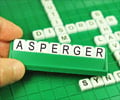In patients with dyslexia parts of the right hemisphere of the brain have been shown to differ from those of normal readers
In patients with dyslexia parts of the right hemisphere of the brain have been shown to differ from those of normal readers.
Researchers writing in the open access journal BMC Neuroscience used magnetic resonance imaging (MRI) to compare the two groups, and were able to associate the neurological differences found with different language difficulties within the dyslexic group.Cyril Pernet, from the University of Edinburgh, worked with a team of researchers to compare the brains of 38 people with dyslexia to a model 'typical brain' created by combining the scans of 39 normal readers. In all cases, differences could be seen in either the right cerebellar declive or the right lentiform nucleus. These were associated with varying performance in language tests.
It is increasingly accepted that dyslexia is not a unique entity, but might reflect different neuro-cognitive pathologies. Researchers have been looking for a way to distinguish between different types of dyslexia for several years, and this research is among the first to show a direct link between brain structure and symptom severity. According to Pernet, "These results provide evidence for the existence of various subtypes of dyslexia characterized by different brain phenotypes. In addition, behavioral analyses suggest that these brain phenotypes relate to different deficits of automatization of language-based processes such as grapheme/phoneme correspondence and/or rapid access to lexicon entries".
Source-Eurekalert
RAS











